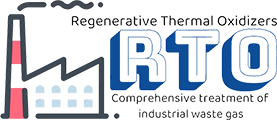RTO for Printing and Industry Trends
导言
Regenerative Thermal Oxidizers (RTOs) have been widely used in the printing industry for decades to control volatile organic compounds (VOCs) emissions. RTOs are a type of air pollution control equipment that destroys VOCs by heating up the exhaust air stream to convert the pollutants into harmless carbon dioxide and water vapor. In recent years, there have been some industry trends that impact the application and design of RTOs for printing facilities. This article will explore some of these trends and how they relate to RTO usage.
Industry Trend 1: Digital Printing
Digital printing has become more popular in recent years due to its cost-effectiveness and flexibility. Unlike traditional printing methods, digital printing does not require the use of plates and chemicals, which results in fewer VOC emissions. However, digital printing still generates some VOCs, particularly from inkjet printers. RTOs can effectively control VOC emissions from digital printing by capturing the VOC-laden exhaust air and removing the pollutants through thermal oxidation.
Industry Trend 2: Energy Efficiency
Energy efficiency is an important consideration for printing facilities. As energy costs continue to rise, printing companies are looking for ways to reduce their energy consumption and costs. RTOs can help achieve this goal by using excess heat from the combustion process to preheat the incoming air stream, thereby reducing the energy needed to heat the air to the necessary temperature. Additionally, some RTOs come equipped with heat recovery systems that can further increase energy efficiency.
Industry Trend 3: Sustainable Materials
Sustainable materials are becoming increasingly popular in the printing industry as companies look to reduce their environmental footprint. These materials, such as soy-based inks, can result in fewer VOC emissions compared to traditional petroleum-based inks. However, sustainable materials can still generate some VOCs, and RTOs can be used to capture and destroy these pollutants.
Industry Trend 4: RTOs for SBS Industry
Solid Bleached Sulfate (SBS) is a type of paperboard used in a variety of applications, including packaging and printing. SBS production is known to generate significant amounts of VOCs, making it an ideal application for RTOs. RTOs can effectively control VOC emissions from SBS production by capturing and destroying the pollutants through thermal oxidation. In addition, RTOs can be designed to meet the specific needs of SBS production facilities, such as high flow rates and low pressure drop.
结论
In conclusion, RTOs continue to be an important tool for controlling VOC emissions in the printing industry. As industry trends continue to evolve, RTOs will need to adapt to meet the changing needs of printing facilities. By staying up-to-date with industry trends and advancements in RTO technology, printing companies can effectively control VOC emissions while reducing their environmental footprint and operating costs.


公司介绍
Our company is a high-tech enterprise specializing in the comprehensive treatment of volatile organic compounds (VOCs) in exhaust gases and carbon reduction energy-saving technology for the printing and industrial sectors.
Core Technologies
Our core technologies include thermal, combustion, sealing, and control systems. We have the capability for temperature field simulation, air flow field simulation modeling, ceramic heat storage material performance, molecular sieve adsorbent material selection, and VOCs high-temperature incineration oxidation experimental testing.
Team Advantages
We have established RTO technology research and development center and exhaust gas carbon reduction engineering technology center in Xi’an, as well as a 30,000-square-meter production base in Yangling. We are a leading manufacturer in terms of global RTO equipment and molecular sieve wheel equipment sales. Our core technical team comes from the Institute of Liquid Rocket Engine Research of the China Academy of Launch Vehicle Technology (CALT). We currently have more than 360 employees, including over 60 research and development technical backbone members, including 3 senior engineers at the researcher level, 6 senior engineers, and 47 doctors of thermodynamics.
核心产品
Our core products include the rotating valve regenerative thermal oxidizer (RTO) and the molecular sieve adsorption concentration wheel. Combined with our expertise in environmental protection and thermal energy systems engineering, we are able to provide customers with comprehensive solutions for industrial exhaust gas treatment, carbon reduction, and thermal energy utilization under various operating conditions.

认证、专利和荣誉
- 知识产权管理体系认证
- 质量管理体系认证
- 环境管理体系认证
- 建筑业企业资质
- High-Tech Enterprise
- 旋转阀蓄热式热氧化炉专利
- Patent for Rotary Wheel Heat Storage Incineration Equipment
- Patent for Disk Zeolite Wheel
Choosing the Right RTO Equipment
- Determine the exhaust gas characteristics
- 了解当地法规和排放标准
- 评估能源效率
- 考虑操作和维护
- Conduct budget and cost analysis
- Select the appropriate type of RTO
- 考虑环境和安全因素
- Perform performance testing and verification

服务流程
- Preliminary consultation, on-site inspection, and needs analysis
- Solution design, simulation and modeling, and solution review
- Customized production, quality control, and factory testing
- 现场安装、调试和培训服务
- 定期维护、技术支持及备件供应
We are a one-stop solution provider with a professional team that customizes RTO solutions for our customers.
作者:Miya米娅
